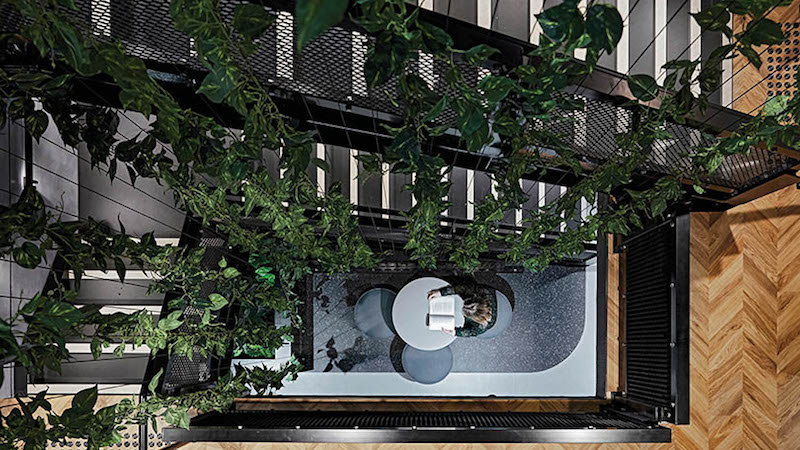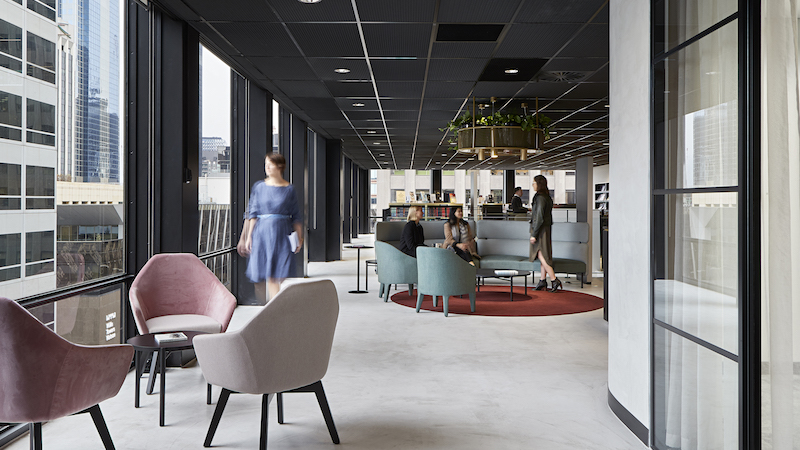Lessons Learned from Lockdown
Twelve months on and the pandemic is still very much with us.
In Australia, we are attempting to return to some kind of normal and, despite outbreaks, snap lockdowns and border closures, we are looking forward.
Reflecting on the past year, it is time to take a breath and consider what effect this experience has had on our workspaces, buildings and cities.
What exactly has changed, what are the lessons learnt and what are the new ways of working and living? What should we decide to take with us, if anything, moving forward?
The change in work practices is an area Gray Puksand, a leading Australian architecture and design practice with studios in Brisbane, Melbourne, Sydney and Canberra, has been looking at in detail.
Gray Puksand partner Heidi Smith said that last year had notably taught us that we are resilient and adaptable.
"We have blown up all the myths around remote working, proving we have more options for when, where and how we work than ever," Smith said.
“Interestingly, none of these ways of working are remarkedly new. Many businesses have been exploring various flexible and agile working options for many years.
“What the compulsory work-from-home experience gave us was the forced experience of remote working and from this the good and the bad were exposed.”
The increased sense of control and flexibility in our working day, the lack of commute time, the gained connection with immediate family and rebalance of work/life were all positive outcomes.
There are many exciting opportunities for businesses to consider including an expanded talent pool no longer limited by location, and a more dynamic and nimbler workforce.
“However, the data collected from multiple surveys last year shows that while we have gotten comfortable in our own homes, we most of all miss connection to others—our teams, our friends, our communities,” Smith said.
“The lack of physical connection and resulting waning of team spirit is challenging our sense of well-being and productivity.
“This desire for authentic connection brings a renewed focus to our workspaces, their purpose and how they can be better designed to support our workers.
“We propose the following themes will influence the future of the workspace design:

Community
The need to belong is a fundamental human motivation. While technology gives us more ways to reach out, there’s no replacement for real-time conversation and bonding.
We do not collaborate with people we do not know or feel connected to, therefore the provision of spaces in the workspace that encourage social behaviours will be increasingly valued as essential workspace settings.
By acknowledging the importance of socialising to create true connection and relationship we have the opportunity to create more responsive collaborative, co-working and community focussed workspaces.
Biophilia
We have long understood the importance of biophilia (innate affinity of life or living systems) in workspace design, however, the learning from this pandemic, beyond plant pots and natural materials, is the crucial importance of open spaces and fresh air.
We need to look beyond merely providing access to a balcony, external spaces in office buildings must evolve into purposeful, well appointed 'work-zones'.
Wintergardens, permeable facades and open terraces that support meetings and collaboration via glare and temperature control, Wifi and power connectivity and fully AV enabled need to become the norm.
Creativity
More than ever, innovation and creativity are essential for success. This pandemic has shown that businesses can be nimble, that decision making can be streamlined, and that testing something new and learning from the process is more important than if the idea was successful.
Workspaces today must continue to support our need to effectively and creatively innovate.
The future workspace must provide the quiet spaces for generating the creative spark with corresponding team spaces to workshop the ideas into fruition to provide opportunity for true creativity at work.

Flexibility
The untethering of ourselves from our place of work, embracing a fluid approach to the workday, and allowing for people led interactions will influence the way we see the office, and its value as a place.
Comprising a Dynamic People First model, workspaces will become a curated suite of collaboration work settings, to allow collaboration and team sharing to sit alongside focussed and individual work.
Technologically equipped to allow workers to choose to either work remotely or in the workplace, allowing for a truly empowered, people focussed environment that champions wellbeing, and supports all team members.
Innovation
The opportunity to learn and develop is key to a team’s ability to innovate. Responsive spaces to learn and innovate will become essential elements of the future workspace.
Learning happens beyond the traditional training room; the new learning space needs to inspire and excite.
Autonomous and flexible layouts, responsive furniture settings, and technology rich environments will give teams the opportunity to create, discover and be inspired by in-person and online colleagues.
Collaboration
One of the most decisive feedback responses from the past year is that collaborating with others is harder when working from home.
While individual-focussed work has now been proven to be able to be undertaken from “anywhere”, our team based work, collaboration, brainstorming, innovation, has been constrained.
Collaboration is essential to productivity and innovation and as such priority must be given to these team spaces within our offices.
The ability to readily meet to collaborate and share information with colleagues will be a major drawcard to attract workers back to the office.
The next 12 months will be crucial in determining the future of our workspaces.
As we move towards a normality, we believe it is an opportunity to test and experiment with these themes to discover what works best for individuals and companies, to expose what lessons will stay with us, and what we really want to leave behind.
We believe that these themes respond to the new aspirations of workers in a post covid world, seeing our workspaces become inspirational places of energy, connection and team spirit.
The Urban Developer is proud to partner with Gray Puksand to deliver this article to you. In doing so, we can continue to publish our free daily news, information, insights and opinion to you, our valued readers.
















